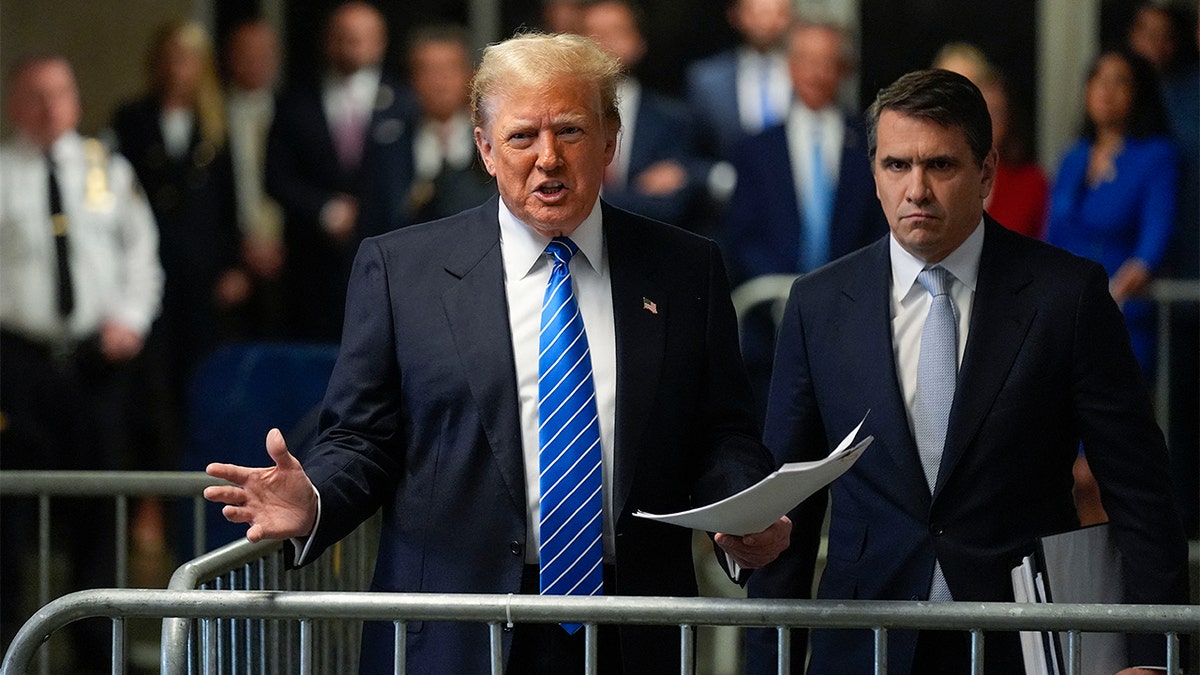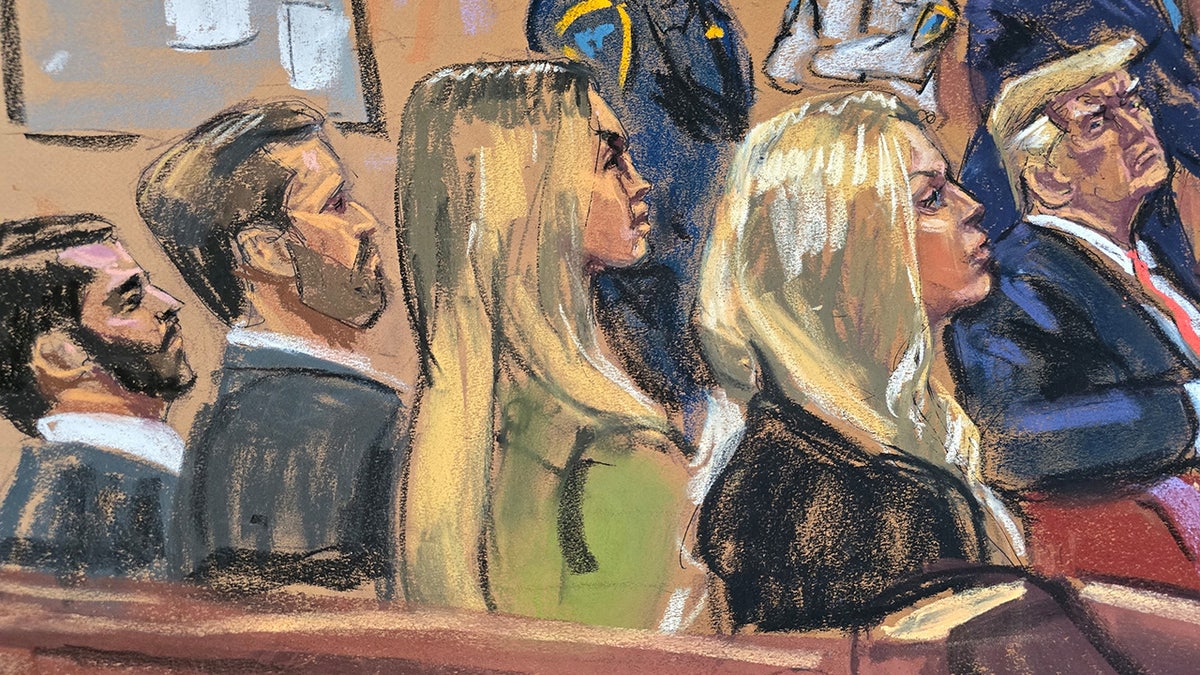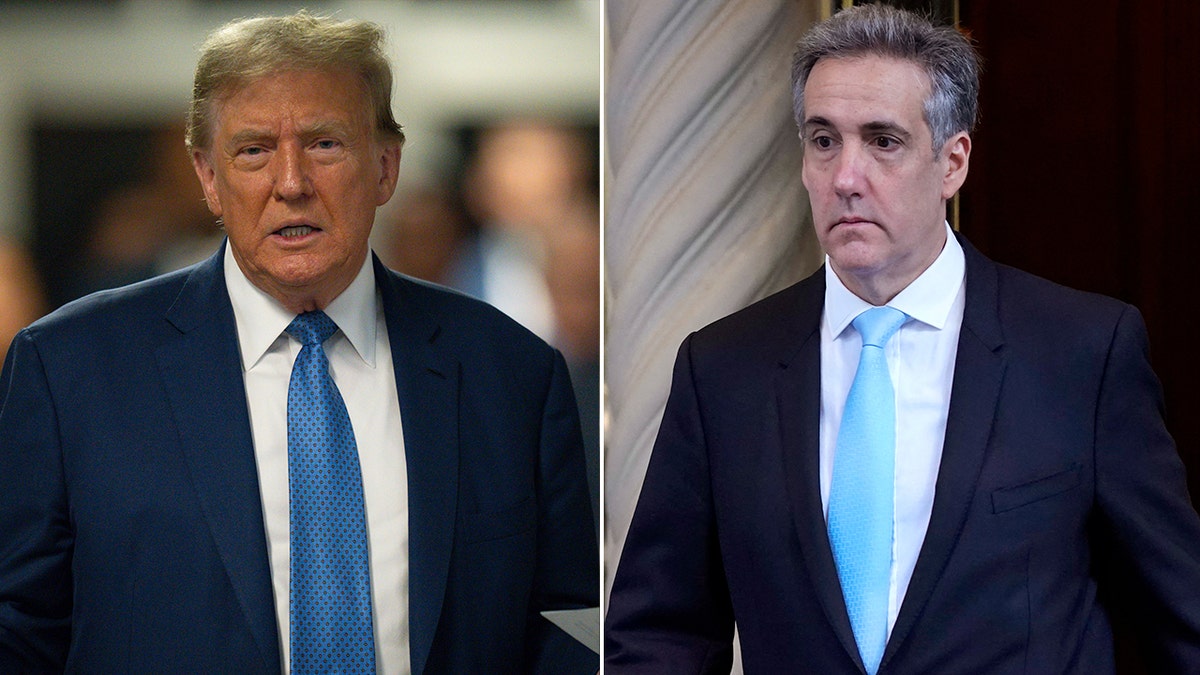New York prosecutors made their closing arguments in the case against former President Trump on Tuesday, saying the case is “about a conspiracy and a cover-up” and that they have presented “powerful evidence” to convict.
Trump is charged with 34 counts of falsifying business records in the first degree. He has pleaded not guilty.
Prosecutors need to prove beyond a reasonable doubt that Trump falsified records to conceal a $130,000 payment to Stormy Daniels, a pornographic performer, in the lead-up to the 2016 election to silence her about an alleged affair with Trump in 2006. The former president has maintained his innocence.
New York prosecutor Joshua Steinglass presented the closing arguments for Manhattan District Attorney Alvin Bragg and delivered the summation for more than five hours.

Trump speaks to the media on May 13, 2024. (Seth Wenig/Pool/AFP via Getty Images)
Steinglass said Trump’s intent to defraud “could not be any clearer,” arguing that it would have been easier for him to pay Daniels directly. Instead, the prosecutor said, Trump concocted an elaborate scheme and that everything he and his cohorts did was “cloaked in lies.”
“The name of the game was concealment, and all roads lead inescapably to the man who benefited the most: the defendant, former President Donald Trump,” Steinglass said.
Steinglass defended their use of Trump’s former lawyer, Michael Cohen, as a witness, telling the jury, “I’m not asking you to feel bad for Michael Cohen. He made his bed.”
“But you can hardly blame him for making money from the one thing he has left, which is his knowledge of the inner workings of the Trump Organization,” he said.
“We didn’t choose Michael Cohen to be our witness. We didn’t pick him up at the witness store,” Steinglass said. “The defendant chose Michael Cohen to be his fixer because he was willing to lie and cheat on the defendant’s behalf.”
Cohen had testified he was “reimbursed $420,000” for the $130,000 he paid to Daniels. Cohen said former Trump Organization CFO Allen Weisselberg suggested that Cohen “gross up” the payments and that Trump knew the details of the reimbursement.

Former President Trump’s children, Tiffany Trump, Donald Trump Jr. and Eric Trump, with his wife, Lara, listen as defense lawyer Todd Blanche presents closing arguments during Trump’s criminal trial in New York City on May 28, 2024. (Reuters/Jane Rosenberg)
The prosecution presented Cohen with 11 checks totaling $420,000. Cohen confirmed they were all received and deposited. The checks had a description of “retainer,” which Cohen said was false.
Meanwhile, Steinglass said the prosecution presented the jury with “smoking guns,” referring to handwritten notes by Weisselberg and ex-controller Jeffrey McConney.
The two documents show calculations related to the payments Cohen got in 2017. They included $130,000 as well as an unrelated payment, a bonus, and money to cover taxes, according to testimony.
“They are the smoking guns,” Steinglass said, saying they “completely blow out of the water” the defense’s claims that the payments were for legal work.
Steinglass went on to accuse Trump of “lies” in bank accounts, shell companies and of false denials.
“The name of the game was concealment, and all roads lead to the man who benefited most, the defendant, Donald Trump,” he said.
Steinglass said Trump was actively trying to prevent the “catch and kill” scheme from going public, saying that “he had every reason to conceal election fraud.”

Former President Trump and Michael Cohen (Getty Images)
Halfway through Steinglass’ presentation, Trump left the courtroom, only to post on his Truth Social his opinion of the lengthy closing argument by the prosecution: “BORING!”
Steinglass went on to highlight a phone call between Cohen and Trump on Oct. 8, 2016, which was the day after the “Access Hollywood” tape was made public.
ROBERT DE NIRO’S ‘OVER-THE-TOP’ TIRADE WAS ‘STUPID MISTAKE’ BY BIDEN CAMPAIGN: ROVE
“There’s just no way, no way, Cohen wouldn’t tell Mr. Trump about Daniels in that phone call,” Steinglass said.
Pointing to more calls, many around the time of key developments in the Daniels negotiations, Steinglass said, “Is this timing all a coincidence?”
Wrapping up his five-hour presentation, Steinglass echoed an infamous Trump line: “Donald Trump can’t shoot someone on Fifth Avenue at rush hour and get away with it.”
CLICK HERE TO GET THE FOX NEWS APP
The comment prompted an objection from Trump’s lawyer, which was sustained.
The Associated Press contributed to this report.